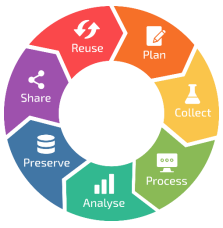Predatory Journals
Predatory Journals
-
Open Data
-
Creative Commons License
-
Open Access
-
Publication Support
-
Data Management Plan
-
Metadata
-
Educational Resources
-
Predatory Journals
-
EOSC
-
Contact
There are many "publishers" who misuse the Open Access principle to enrich themselves. These "publishers" create fraudulent or pseudoscientific publications and journals and their primary purpose is to make money on APC’s.
Predatory journals or publications are characterized by not going through a quality peer review process and not having the information verified and/or confirmed by reviewers. Articles published in these journals are generally not of high scientific quality and are not perceived as credible in the scientific community.
A good place where to start a verification of a journal credibility is Think. Check. Submit.
A basic guide how to verify the credibility of a conference is provided at Think. Check. Attend.
There have been published a lot of articles on the topic, an interesting overview was published in December 2019 in Nature journal.
An updated list of predatory journals can be found at https://www.openacessjournal.com.
Characteristics of predatory journals
- No or just fictional peer review.
- Rapid publication of the article (within a few days after sending the article to the publisher)
- Non-compliance with publication standards.
- Aggressive and intrusive behaviour of publishers (sending emails to authors, inviting them to editorial boards and conferences as key-note speakers).
- Vague information on author fees (fees often revealed ex post).
- Journal titles can be easily confused with their prestigious counterparts, e.g. swapping a word in the title, adding a word, a preposition or an article.
- Journal titles too generic.
- Putting names of well-known scientists on editorial boards without their awareness and/or permission.
- The same editorial board for multiple journals of the same publisher.
- Fictitious or inaccurate contact details (generic email addresses, contact forms, fictitious company address or just a P.O. BOX).
- Misleading indexing of the journals (false or low-level indexing, formal lists).
- Fictitious metrics or false information on impact factor and Scopus indicators.
- High number of plagiarisms.
Types of publications with possible predatory behaviour:
- Stand-alone journals
- Collections of journals from one publisher
- Conferences (the events and/or also abstracts published e.g. in a predatory journal)
- Books - vanity press type publishers where the author pays for the publication of the book, but the publisher does not provide the normal editorial work
For example, Lambert Academic Publishing, a part of Omniscriptum Publishing Group (former VDM Verlag Dr. Müller) most often approaches the graduates with an offer to publish their thesis. The principle is absolutely the same as with predatory journals – a lack of quality control, higher costs, low readership, inability to publish the results with a reputable publisher.
Why are the predatory journals “dangerous”?
Journals don't pass quality peer review. Their content is debatable, the information published may not be trustworthy, and they may contain serious errors or misleading conclusions.
The author’s results do not reach the desired scientific community, the readership and citation rate of such journals is questionable.
Since the results are already published, it is not possible to reuse them for a reputable journal.
Discussions with such a publisher for retraction or possible correction of the article are not usually successful.
The author associates his/her name with an untrustworthy publisher, which reduces his/her reputation. The journals remain traceable and there is “no way back."
Predator identification and verification of the journal quality
- Verification of the impact factor stated value in the Journal Citation Reports index (Web of Science database); or verification of the journal indexation in the Scopusdatabase or in ERIH+.
- Check the journal by ISSN in the ROAD
- Verification that the journal is not on Beall's list – an archive of predatory journals. Caution: the last update of Beall’s list is dated January 2017 when the blog was terminated.
- Journals imitating the identity of a professional journal (as known as hijacked journals) – the archive can be found here.
Examples of some predatory practices
1. Misleading metrics
- Advance Science Index
- Eurasian Scientific Journal Index (ESJI)
- Global Impact Factor
- General Impact Factor
- Impact Factor Services for International Journals (I.F.S.I.J.)
- Index Copernicus
- Journal Influence Factor
- Universal Impact Factor
2. Confusing identities
|
Predator |
Original |
|
The International Journal of Engineering and Science |
International Journal of Engineering Science |
|
Veliger |
The Veliger |
|
Journal of Environmental & Analytical Toxicology |
Journal of Analytical Toxicology |
3. Stolen identity
Predator: ARCTIC Journal (https://arcticjournal.org/index.html).
Original: ARCTIC Journal (https://arctic.ucalgary.ca/about-arctic-journal).
Predatory conferences
More and more often there are also predatory conferences being organized. Their main purpose is to collect conference fees. An invitation to such a conference often resembles a travel agency proposal rather than an invitation to share professional information. The basic features of predatory conferences can be found at this web page or here.
- Hits: 4579



